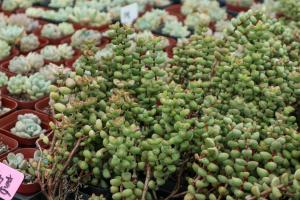Introduction
If you're a gardening enthusiast and want to add some green to your home, you may be wondering what to use for a large plant pot. The material you choose for your pot can drastically influence the health and growth of your plants. In this article, we'll discuss some of the most common materials used for large plant pots and their pros and cons.
Clay pots
Clay pots are a traditional and timeless choice for large plant pots. They are often made of terra cotta, a type of clay that is porous and allows air to reach the soil. This can be beneficial for plant growth, as it promotes better drainage and root development. Additionally, clay pots are sturdy and heavy, making them less likely to tip over and spill soil.
However, clay pots can be prone to cracking if exposed to extreme temperatures or if dropped accidentally. They also tend to dry out faster than other types of pots, which means you may need to water your plants more frequently.
Plastic pots
Plastic pots are lightweight, inexpensive, and come in a variety of sizes and colors. They are also less susceptible to cracking than clay pots, making them a durable choice. Additionally, plastic pots retain moisture well, which means you can water your plants less frequently.
However, plastic pots are not as breathable as clay pots, which can lead to soil staying damp for too long and promoting root rot. They also tend to be less aesthetically pleasing than other materials.
Metal pots
Metal pots, such as those made of stainless steel or copper, can add a modern and stylish touch to your home decor. They are also durable and will not crack or break easily. Additionally, metal pots are not porous like clay, which means they don't absorb as much moisture and the soil stays drier.
However, metal pots can get very hot in direct sunlight, which can damage the roots of your plants. They can also be expensive compared to other materials.
Concrete pots
Concrete pots are a solid and heavy option for large plant pots. They are extremely durable and can withstand harsh weather conditions. Additionally, concrete pots are porous like clay, which means they allow for air to reach the roots and promote drainage.
However, concrete pots can be difficult to move due to their weight. They can also crack over time due to freezing and thawing, which can weaken the pot's structure.
Conclusion
Choosing the right material for your large plant pot can make all the difference in the health and growth of your plants. Ultimately, the material you choose will depend on your personal style, budget, and specific plant needs. Whether you choose clay, plastic, metal, or concrete, be sure to provide proper care and maintenance to ensure the longevity of your plant and pot. Happy planting!

 how many times do yo...
how many times do yo... how many planted tre...
how many planted tre... how many pine trees ...
how many pine trees ... how many pecan trees...
how many pecan trees... how many plants comp...
how many plants comp... how many plants can ...
how many plants can ... how many plants and ...
how many plants and ... how many pepper plan...
how many pepper plan...































